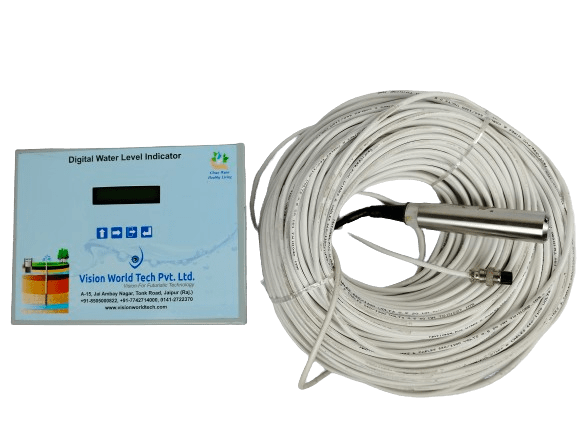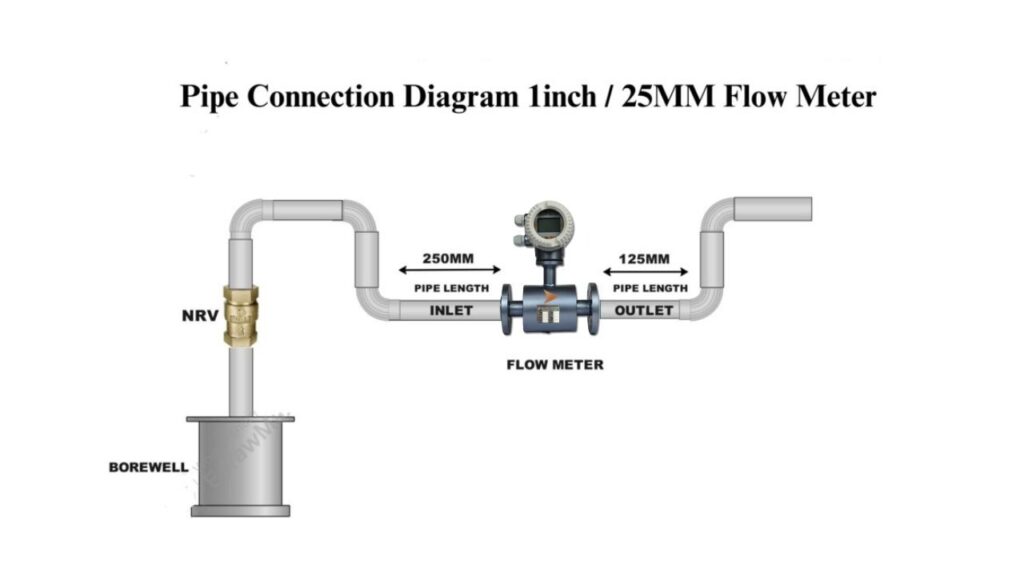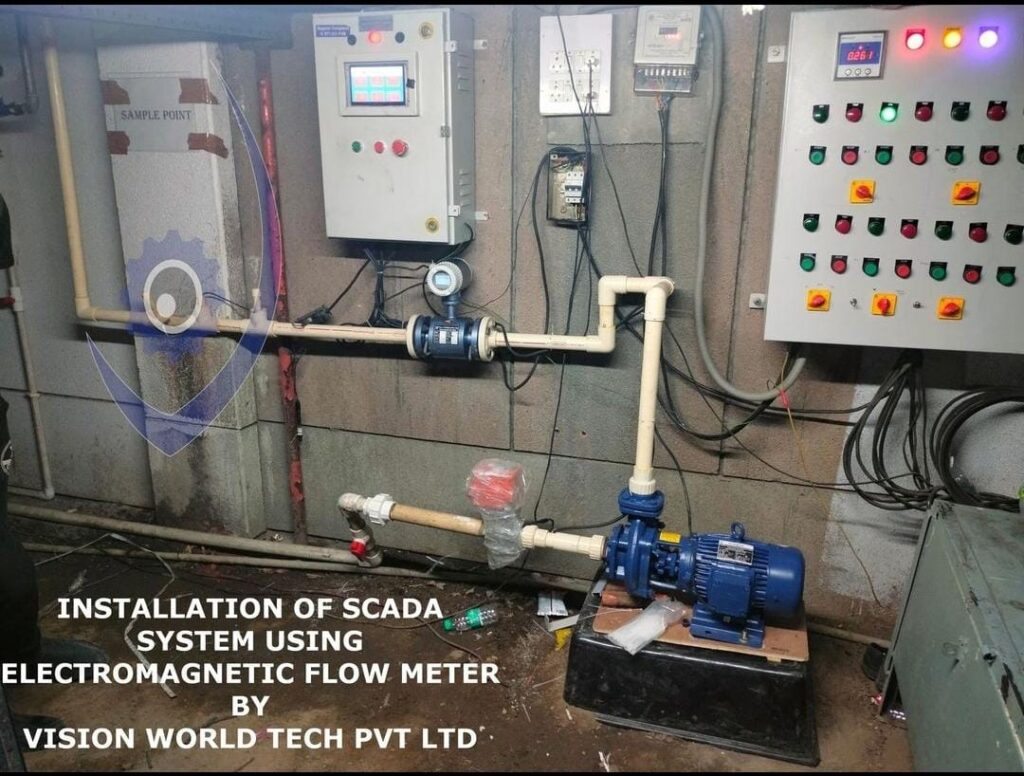Without oppressing the one says that groundwater is a precious resource- the last one to go- until gets exhausted. To rise above the challenge of water scarcity and environmental conservation, it is necessary to impose the careful monitoring of groundwater levels because they must be part of a decision-making process. Indeed, a digital groundwater piezometer has become an instigator of environmental studies, thus, engineering and environmental leaders have gotten the breakthrough, too. Because there are any benefits of this tool and how does it really work? Here at, we shall explore aspect of digital groundwater piezometers, their uses, and the reasons & why they are the most important contrivance in sustainable management of water resources
What is a Digital Groundwater Piezometer?
Digital groundwater piezometers are electronic instruments used to measure the pressure of groundwater in the boreholes, wells, and other underground structures. These instruments are produced to reduce the errors of the traditional methods, by providing the required accuracy with calibration and the reliability of the results hence the necessity for the various applications.
What is a Digital ground water level recorder piezometer?
Digital groundwater piezometers are electronic instruments used to measure the pressure of groundwater in boreholes, wells, and other underground structures. They are designed to provide accurate and reliable measurements of groundwater levels and pressures, which are essential for various applications such as:

- Groundwater monitoring: Digital piezometers allow stakeholders to detect the availability of groundwater which in turn will help them make a decision about how they will manage the resource efficiently and effectively.
- Hydrological research: Digital piezometers help hydrological research to learn the movement of water from groundwater aquifers to the surface and vice versa. So, the functioning of groundwater systems, as these systems are direct suppliers and possessors of the water.
- Geotechnical engineering: Digital piezometers work by measuring the water pressure in the subsurface to ensure dams, tunnels, and bridges safety.
- Environmental monitoring: Digital piezometers are the right choice in monitoring groundwater levels, and pressures in places contaminated with pollutants. The interested people have now got the possibility for pollution and knowing the locations with the presence of contaminants due to the effective use of these devices.
Components of a Digital Groundwater Piezometer
- Sensor: The main part that identifies the level of water.
- Data Logger: Records and keeps the data over time.
- Power Supply: Batteries or solar panels are generally used for long-term monitoring.
- Communications Module: The function of this is to transmit the data to a central system or cloud for analysis.
How Digital Groundwater Piezometers Work
Knowing how the devices work is necessary to grasp their importance. so, the Digital piezometers utilize pressure sensors that detect the water’s hydrostatic pressure at a specific depth.
The Measurement Process
- Installation: They are installed in boreholes or wells that are below the groundwater table.
- Pressure Reading: The sensor reads the water pressure and translates it into an electrical signal.
- Data Conversion: The signal is sent to the data logger, which then converts it into groundwater-level data.
- Data Transmission: Information can be transmitted wirelessly or can be stored for later analysis.
This whole procedure is ongoing as we speak, making it possible to get an unbroken data stream for trend analysis over time.
Applications of Digital Groundwater Piezometers
Digital groundwater piezometers can be used in different fields, thus, augmenting our ability to manage water resources in a responsible manner. Following are the main applications:
- Environmental Monitoring
- Groundwater Quality Assessment: Monitoring contaminants or changes in groundwater quality.
- Flood Prediction: Providing data that can help predict and manage flood conditions.
- Agricultural Use
- Irrigation Management: Farmers can monitor groundwater levels to optimize irrigation practices, reducing water waste.
- Sustainable Farming: Assessing the impact of agricultural practices on groundwater resources.
- Urban Planning and Infrastructure
- Construction Projects: Evaluating groundwater levels to prevent structural issues during construction.
- Land Use Planning: Informing policies on land use based on groundwater availability.
- Research and Academia
- Hydrology Studies: Providing essential data for research on groundwater flow and aquifer dynamics.
- Climate Change Research: Understanding how climate variations influence groundwater supplies.
Benefits of Digital Groundwater Piezometers
Digital piezometers are superior to traditional methods in numerous ways:
- Real-Time Data Access: Immediate monitoring thus timely decision making can be done.
- Increased Accuracy: Digital data takes away human interference and generates more reliable statistics.
- Remote Monitoring: Data can be accessed anywhere which assists fieldwork.
- Cost-Effective: Automated systems lower the expenses for human labor manual monitoring.
Understanding DWLR Groundwater Sensors
Introduction of DWLR Water Sensors
DWLR sensors are systems built specifically for this purpose thanks to their accuracy. In a nutshell, they tell us how much water is present on the soil, which is vital for water management.
1. Importance in Environmental Monitoring
Groundwater sustainability is a significant factor that the environment depends on humans. While DWLR sensors give us a clear picture of water levels, pinpoint changes over time, and illustrate the impact of climate change and anthropogenic activities on our groundwater sources. Such information allows for appropriate actions to be taken to maintain our environment.
1.1 Overview of Applications
- Agriculture: Farmers can optimize irrigation processes based on accurate water level readings.
- Urban Planning: City planners utilize data to design effective storm water management systems.
- Environmental Research: Researchers monitor aquifers to study ecosystems and biodiversity.
2. Advantages of Using DWLR Groundwater Sensors
2.1 Enhanced Accuracy in Measurements
What is the DWLR groundwater sensor? Well, it is one of the most prominent advantages of the DWLR groundwater sensors to be precise, and accurate in its measurements. The accuracy of the data is essential, especially when the water levels are used to make the decisions of life and death.
2.2 Real-time Data Collection
With digital piezometers, data collection happens every second. It follows that users can retrieve the latest information on groundwater levels, which, in turn, is indispensable for timely interventions when needed.
2.3 Cost-Effectiveness and Long-Term Benefit
The fact that the primary investment in DWLR sensors may look heavy at first is true, but the long-term savings and advantages usually outrank these costs. It is true that, through early detection of issues, they can reduce the expenditure on repairs and resource management.
3. Case Studies and Real-World Applications
Farmers using DWLR sensors can make data-driven decisions on water usage, leading to more efficient irrigation practices and conservation of water resources.
3.1 Agricultural Monitoring and Management
Through DWLR sensors, the farmers can measure and monitor the water usage plans which, in turn, can help them decide on the amount of water needed to be utilized in a smart way that results in efficient irrigation and conservation of the water resources.
3.2 Urban Water Management Systems
Asphalt and concrete absorb water during rainstorms, so cities are utilizing information generated by digital piezometers to better stormwater management plans that, in turn, save off floods and build up urban resilience.
3.3 Environmental Protection and Compliance
Environmental agencies take advantage of this technology for monitoring compliance with water regulations and thus protect and conserve groundwater resources.
Conclusion
In summary, the DWLR sensors for groundwater and digital piezometers are extremely useful for monitoring and managing our vital groundwater resources. They give precise and trustworthy measurements which helps stakeholders to take correct water management and resource distribution decisions. Because the accuracy, real-time monitoring, and remote monitoring capabilities of the system make digital groundwater piezometers a vital tool for a variety of applications.
Read more at VISION WORLD TECH PVT. LTD.
FAQs
What is the difference between a traditional piezometer and a digital piezometer?
Piezometer manually getting data is the traditional one, while piezometers digital make use of electronic devices for the collection and analysis of data in real-time, thus they are tighter and more precise.
How often should DWLR groundwater sensors be calibrated?
The frequency of calibration differs, but it is preferable to calibrate DWLR sensors to at least once a year or whenever there are drastic changes in readings.
Can DWLR sensors be used in varying soil types?
Certainly, DWLR sensors can work in many kinds of soil. The choice of the specific piezometer is, however, the most important for suitable conditions to guarantee best operation.

